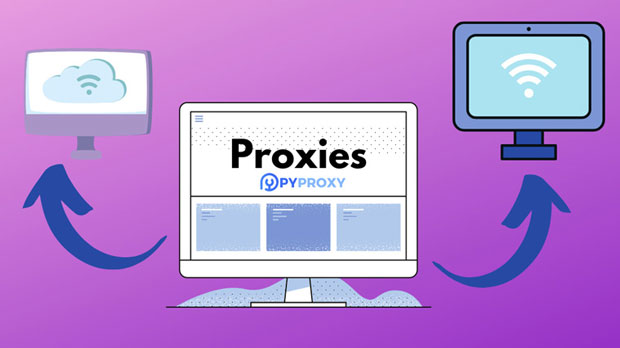In the digital age, privacy and security concerns are growing rapidly, with more individuals and businesses relying on proxy servers to protect their online activities. Among the various types of proxies available, PYPROXY socks5 proxy has gained considerable attention for its enhanced security and reliability compared to free proxies. While free proxies offer basic functionalities at no cost, they often come with limitations that can compromise the user's online safety. On the other hand, PyProxy SOCKS5 Proxy is designed with advanced features to provide a higher level of protection and stability, making it a preferred choice for those who prioritize secure and reliable browsing. Understanding Proxy Servers: A Brief OverviewBefore diving into the comparison, it's important to understand what proxy servers are and how they function. A proxy server acts as an intermediary between a user's device and the internet. It allows users to access websites and services by routing their traffic through the server, masking their IP address in the process. This enhances privacy by hiding the user's actual location and identity. Proxies are generally used for several reasons, such as bypassing geo-restrictions, improving browsing speeds, or securing online activities. They can be categorized into different types, such as HTTP, HTTPS, and SOCKS proxies, each offering different levels of security and functionality.Security: A Key Factor in Choosing Between PyProxy SOCKS5 and Free ProxiesWhen it comes to security, there are stark differences between PyProxy SOCKS5 Proxy and free proxies. PyProxy SOCKS5 Proxy: Enhanced Security FeaturesPyProxy SOCKS5 Proxy is widely regarded as a highly secure proxy option due to several advanced features it offers. sock s5 proxies, in particular, are known for their ability to handle various types of internet traffic without altering the data. Unlike HTTP or HTTPS proxies, SOCKS5 proxies do not interfere with the data being transmitted, which helps maintain the integrity of the connection. One of the most significant advantages of PyProxy SOCKS5 Proxy is its robust authentication mechanism. It requires users to provide authentication credentials before granting access, ensuring that only authorized individuals can use the proxy. This adds a layer of protection against unauthorized access, which is a common vulnerability in free proxies.Additionally, PyProxy SOCKS5 Proxy supports encrypted connections, which further enhances security. This encryption ensures that any data transmitted through the proxy is protected from interception by third parties. For individuals or businesses concerned about data privacy, PyProxy SOCKS5 Proxy provides a secure and reliable solution.Free Proxies: Potential Security RisksIn contrast, free proxies are often plagued by security vulnerabilities. Most free proxy services do not provide encryption or authentication, making them an easy target for hackers and malicious actors. When using a free proxy, users run the risk of their data being intercepted, especially if the proxy is not encrypted. Moreover, free proxies often log user activity, which means that sensitive information, such as browsing history, login credentials, and personal details, could be stored and potentially misused. Many free proxy providers make money by selling users' data to third-party advertisers, further compromising privacy.Some free proxies even inject ads into the user's browsing session, which not only disrupts the user experience but also poses a security threat. These ads could contain malicious code that infects the user's device with malware, spyware, or ransomware.Reliability: How PyProxy SOCKS5 Stands OutReliability is another key factor to consider when choosing between PyProxy SOCKS5 Proxy and free proxies.PyProxy SOCKS5 Proxy: Consistent PerformancePyProxy SOCKS5 Proxy is known for its reliability, offering consistent performance even under heavy traffic. One of the reasons for this is the dedicated infrastructure used by providers of PyProxy SOCKS5. Unlike free proxies, which often rely on shared, overcrowded servers, PyProxy SOCKS5 Proxy services maintain high-quality servers that are optimized for speed and stability.Additionally, PyProxy SOCKS5 Proxy often comes with built-in features that help manage bandwidth usage and prevent server overloads. This ensures that users can rely on the proxy for uninterrupted browsing, even during peak hours.The dedicated nature of PyProxy SOCKS5 services also means that users are less likely to experience connection drops or slow speeds. Since the proxy server is not overloaded with traffic from multiple free users, the quality of service remains high, and users enjoy a smooth browsing experience.Free Proxies: Inconsistent and UnreliableOn the other hand, free proxies are often inconsistent and unreliable. Due to the shared nature of free proxy services, the performance can vary significantly depending on the number of users accessing the server at any given time. During peak usage hours, users may experience slow speeds, connection drops, or even complete server outages.Since free proxies are typically not optimized for performance, they may also have bandwidth restrictions that can hinder browsing speeds. For example, users may encounter throttling, where the speed of the internet connection is deliberately slowed down to manage server load.Additionally, free proxy providers may shut down their services without prior notice, leaving users stranded without a proxy. This lack of reliability can be particularly problematic for businesses that rely on proxies for secure, consistent online operations.Privacy Concerns: PyProxy SOCKS5 vs. Free ProxiesPrivacy is a critical concern when using proxy servers, and PyProxy SOCKS5 Proxy offers a significant advantage in this area over free proxies.PyProxy SOCKS5 Proxy: Strong Privacy ProtectionOne of the standout features of PyProxy SOCKS5 Proxy is its commitment to user privacy. Unlike free proxies, which may log user activity or share information with third parties, PyProxy SOCKS5 services typically have strict no-logs policies. This means that they do not store any data related to user activity, ensuring that personal information remains confidential.Moreover, PyProxy SOCKS5 Proxy allows users to choose the level of encryption for their connections, giving them more control over their privacy. The proxy's ability to mask the user's IP address further enhances anonymity, making it difficult for websites or third parties to track the user's online activities.Free Proxies: Privacy Risks and Data CollectionFree proxies, on the other hand, often collect and store user data, which could be sold to advertisers or hackers. Since free proxy providers rely on advertisements or data sales for revenue, they may track users' browsing habits, search queries, and even personal details. This compromises privacy and increases the risk of identity theft or cyberattacks.Conclusion: Which Option Is Right for You?When comparing PyProxy SOCKS5 Proxy and free proxies, it's clear that PyProxy SOCKS5 offers superior security, reliability, and privacy protection. While free proxies may be appealing due to their cost-effectiveness, they come with significant risks that could compromise both security and privacy. For those who require a secure, reliable, and private browsing experience, PyProxy SOCKS5 Proxy is the clear choice.
Aug 28, 2025


































































